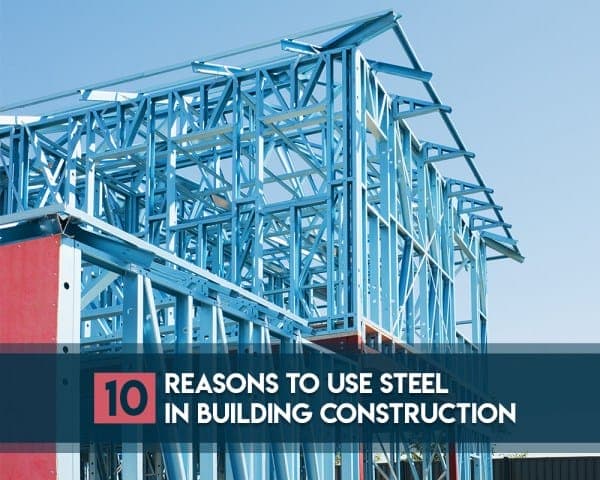
Steel was a stand by material for a long time in the architectural framework, but when it is recognized for its natural beauty and structural integrity, the result can be inspiring. Master architects such as Zaha Hadid, Frank O Gehry, and Moshe Safdie have challenged the idea of using only steel to construct a skeleton of the building and created innovative and surprising fluid structures. Many modern architects are experimenting with the aesthetic of steel from rust texture to polishing for a high shine finish.
Basically here, the buildings are made up of Steel frameworks which support all the loads where columns, beams and girders are made up of steel sections. They are flexible, which makes them very good at resisting dynamic (changing) forces such as wind or earthquake forces.

Reasons to Choose steel for Construction
Generally Steel Structures are Used Because of the Following Characteristics:
- High strength and stiffness per weight
- Long Spans (i.e. large column free area span)
- More accurate detailing
- Non-shrinking and non-creeping at ambient temperature
- Ease of fabrication and mass production including production and hence better quality control
- Substantial elimination of delays due to weather
- No formwork needed
- Termite and rot proof
- Uniform quality
- Economy in transportation and handling
Advantages of Using Steel in Building Structures:
01. Adaptability:
Steel can be adjusted and changed according to the designer’s requirements. The frame which is made from the steel can be repositioned. For example; wall frames made from the steel can be altered easily to widen space and create a new interior layout of building. At the same time, it helps to extend the lifespan of the structure.
02. Beauty:
It gives a freedom to explore ideas to create stylish shapes and textures of the building. It offers a stylish way to create large, column free interiors, that give the building a sense of openness.
03. Cost- Effective:
It is light weight when compared with timber and RCC and also easier to transport, reduces fuel cost and accelerates project schedules. Also, it is energy efficient and can be recycled, and create minimum raw material waste.
04. Ductility:
It can be rolled, cut and turned into a variety of sizes and shapes without changing the composition or physical property through steel.
05. Durability:
It with stands extreme forces and weather conditions such as strong wind, earthquakes, and heavy snow. They are not affected by bugs, termites, fungi, etc. They are more fire- resistant as compared with wooden frames.
Using steel in residential, commercial or industrial structures is definitely a worth investment.
Steel Constructions are Mostly Used in Followings Type of Buildings:
01. High Rise Buildings:
High rise buildings chiefly because of its strength, light weight, and speed of construction.

02. Industrial Buildings:
Industrial buildings because of its ability to create large span (i.e. column free spans) spaces at low cost.

03. Residential Buildings:
Residential buildings where a technique called light gauge steel construction is used which is very similar to wooden framed structures.

04. Temporary Structures:
Temporary Structures as these are quick to set up and remove.

Also Read:
Classification of Loads on Structure
What do You Mean by FSI in Construction of Building?
Can I Start Construction Without Permission from Local Authority?































